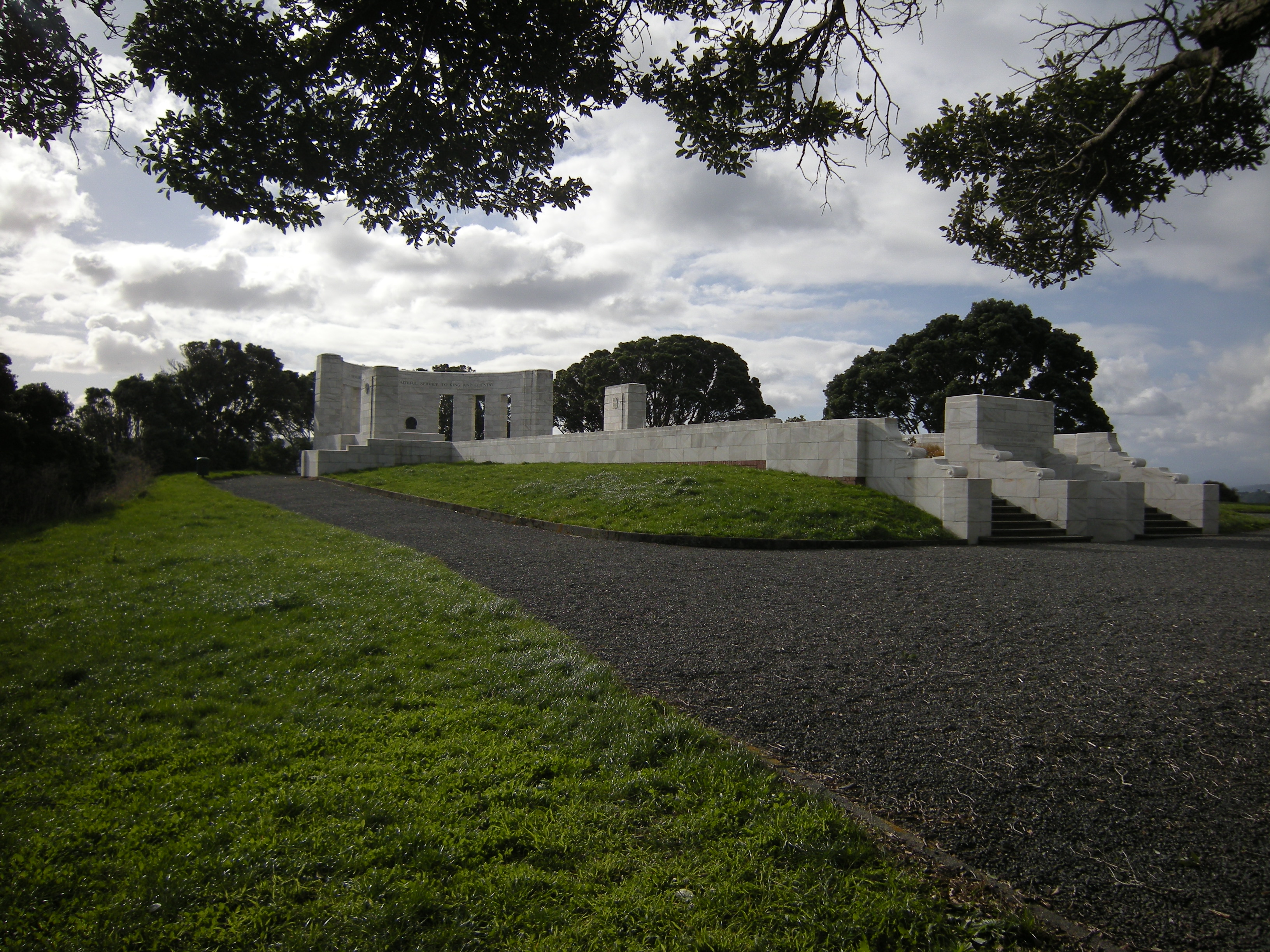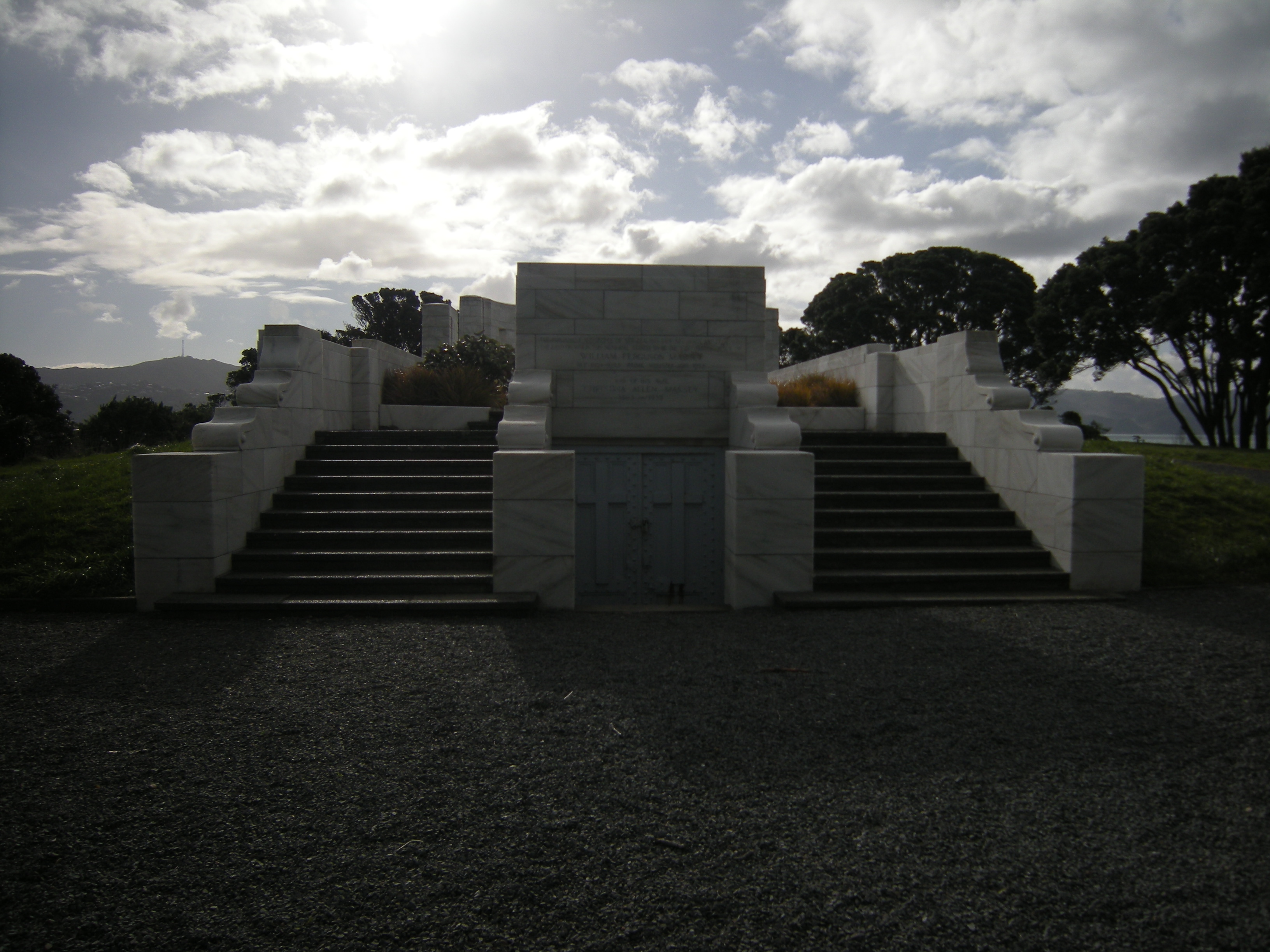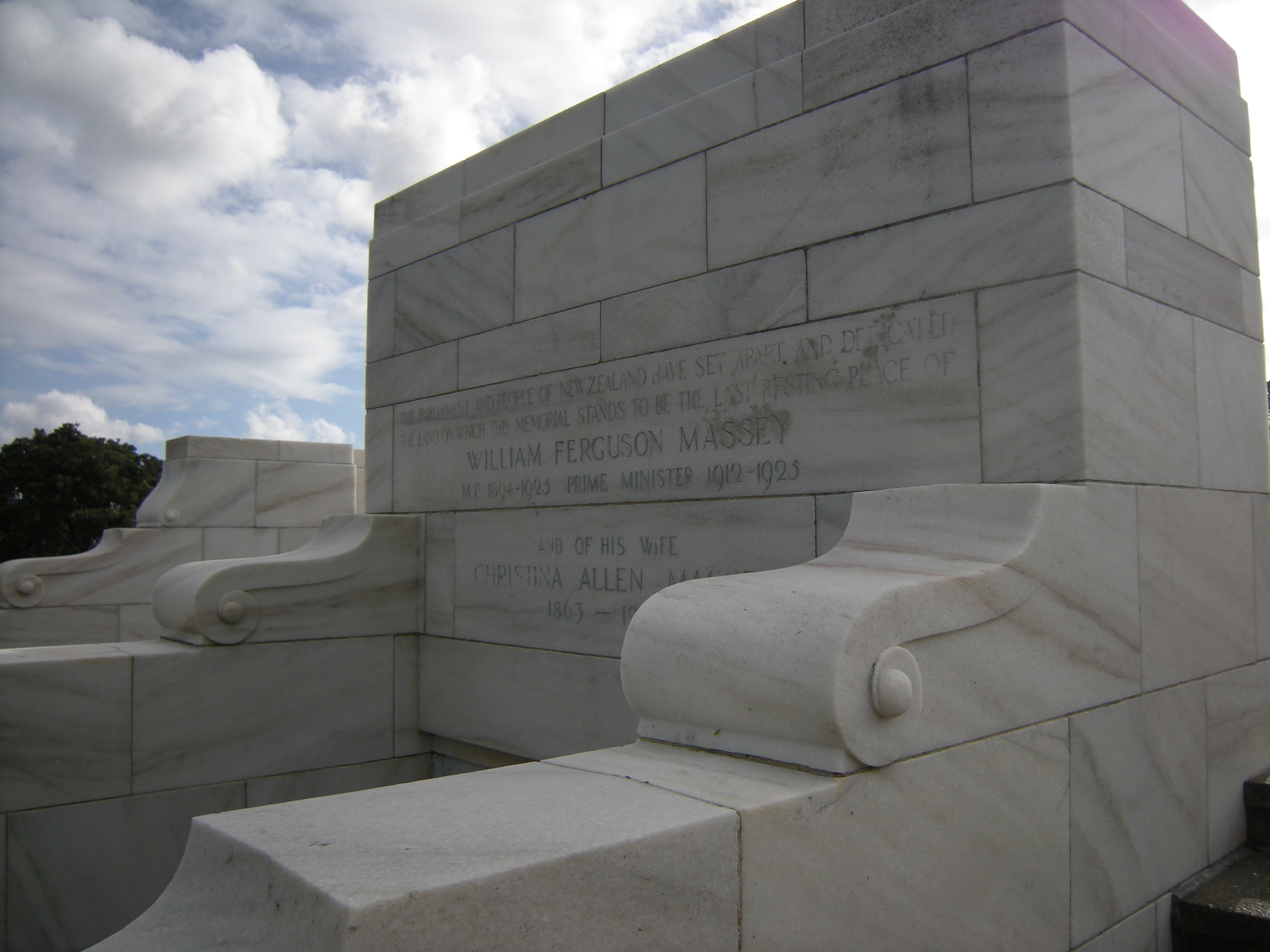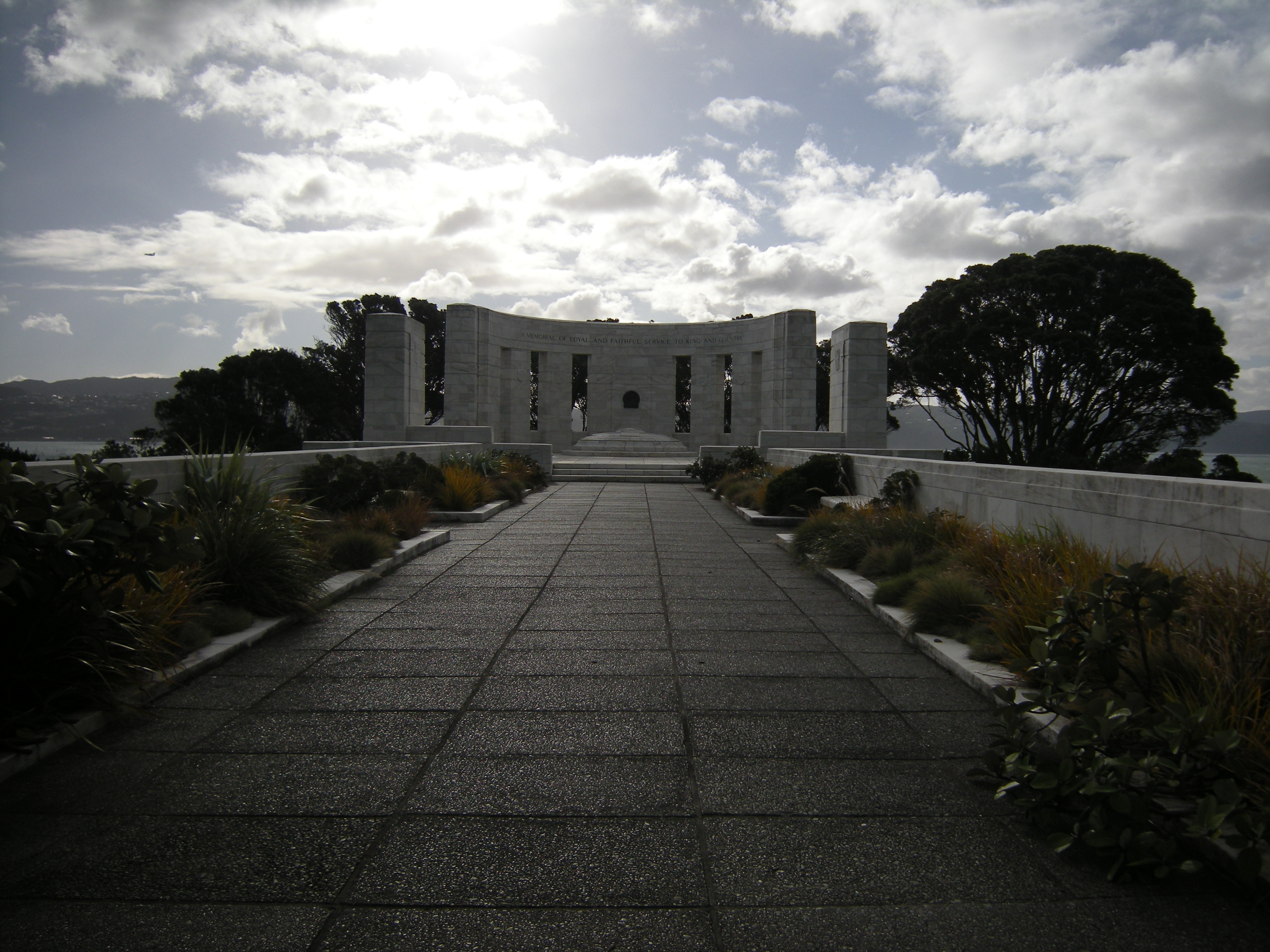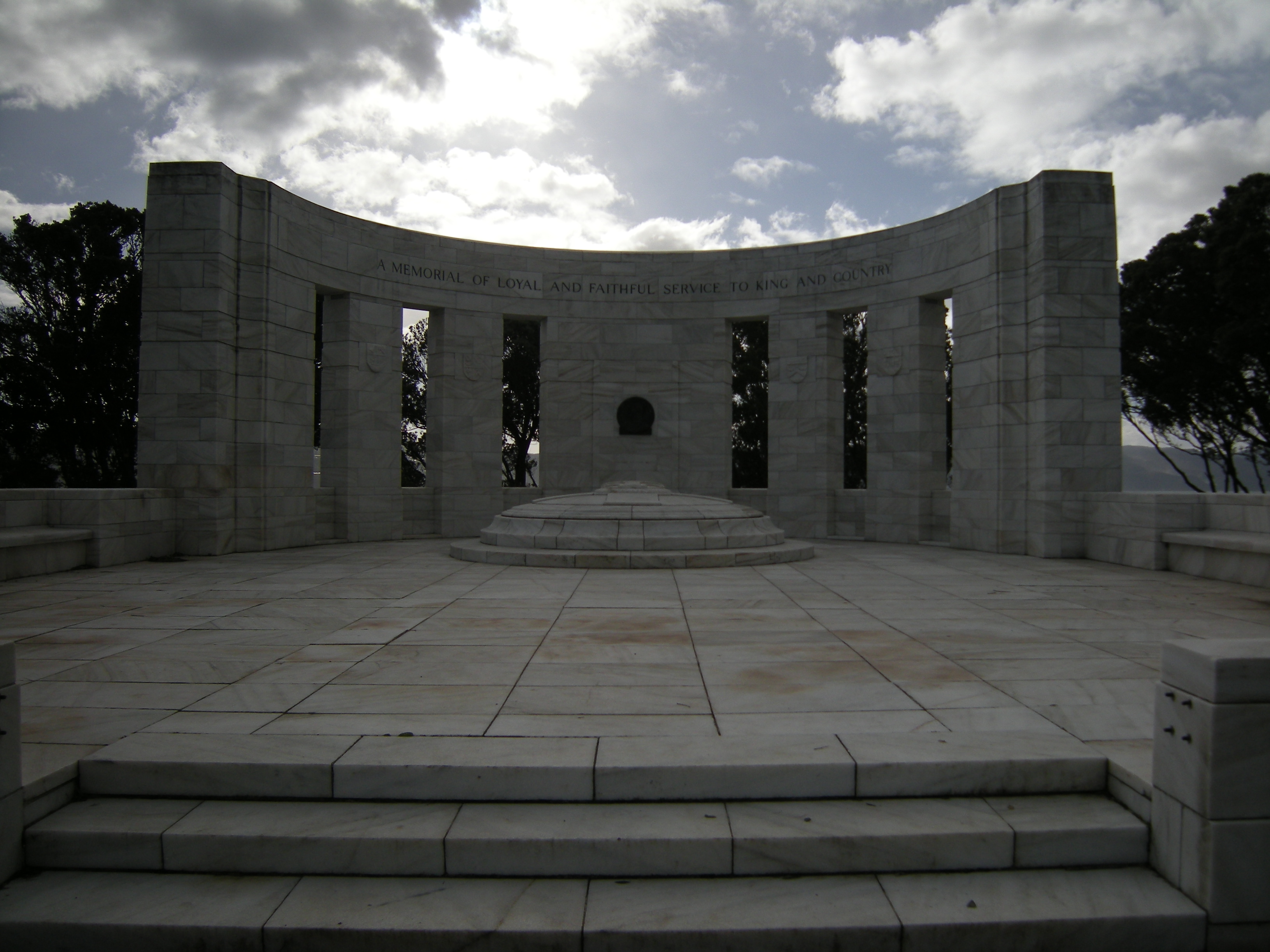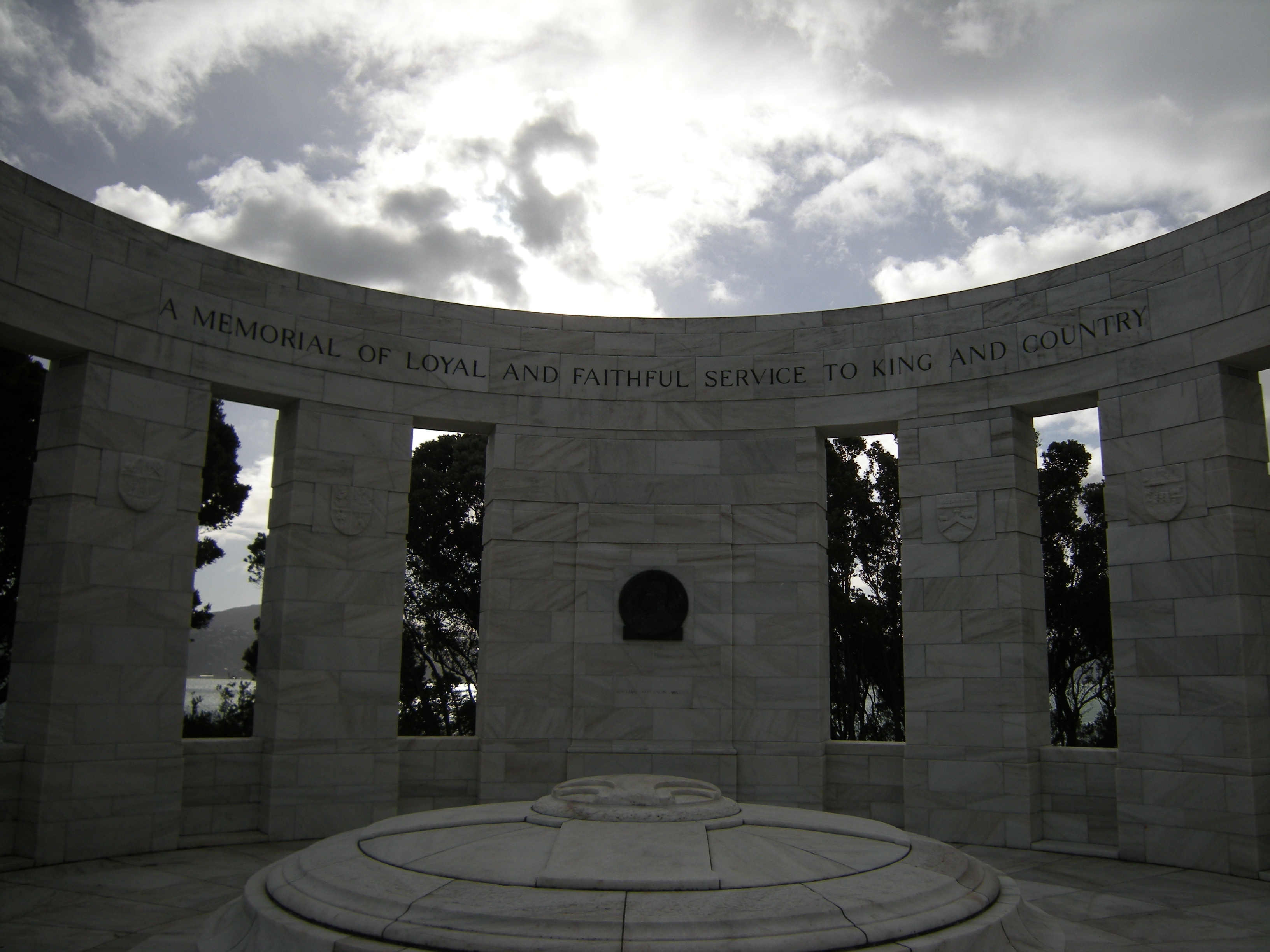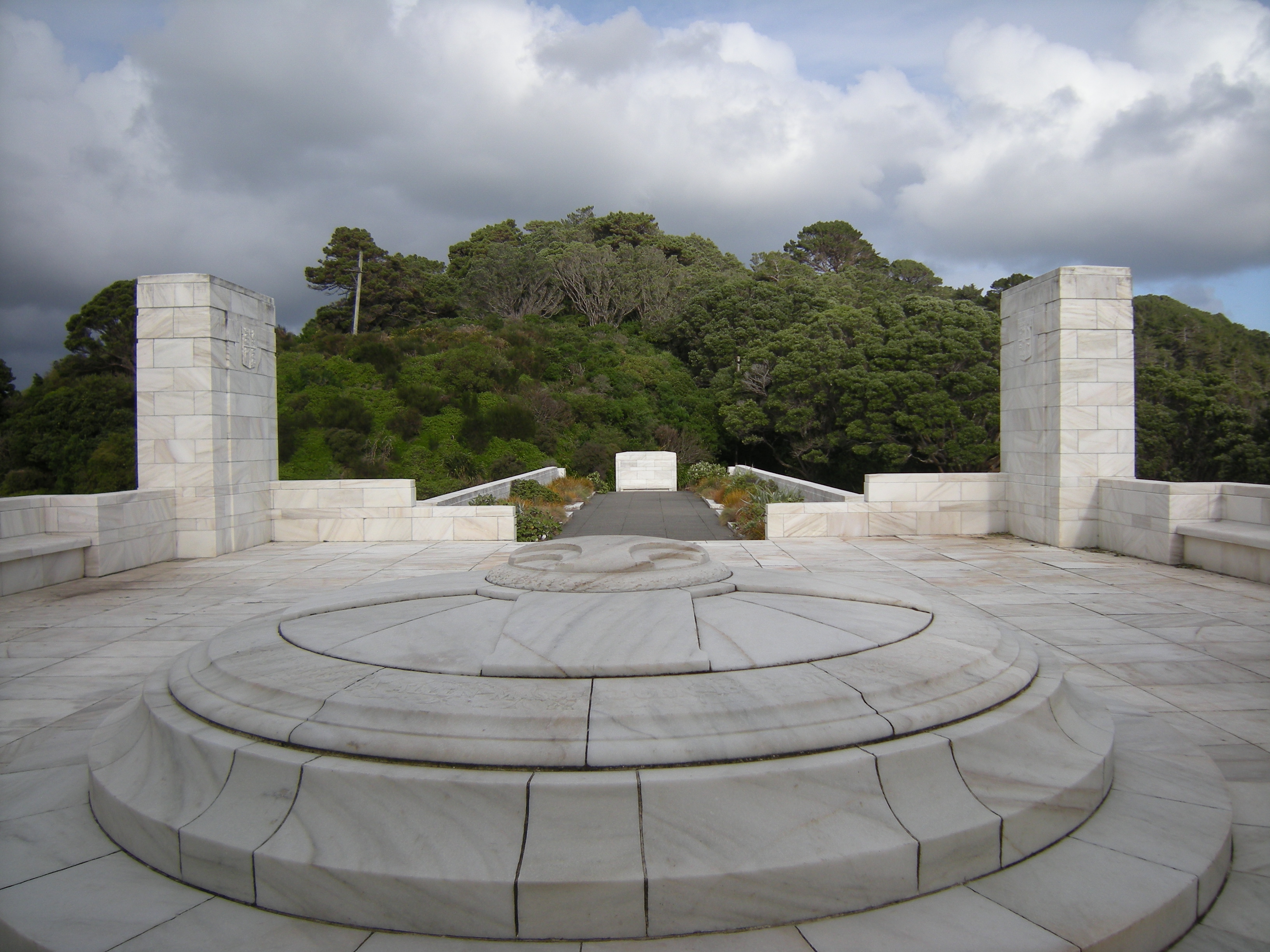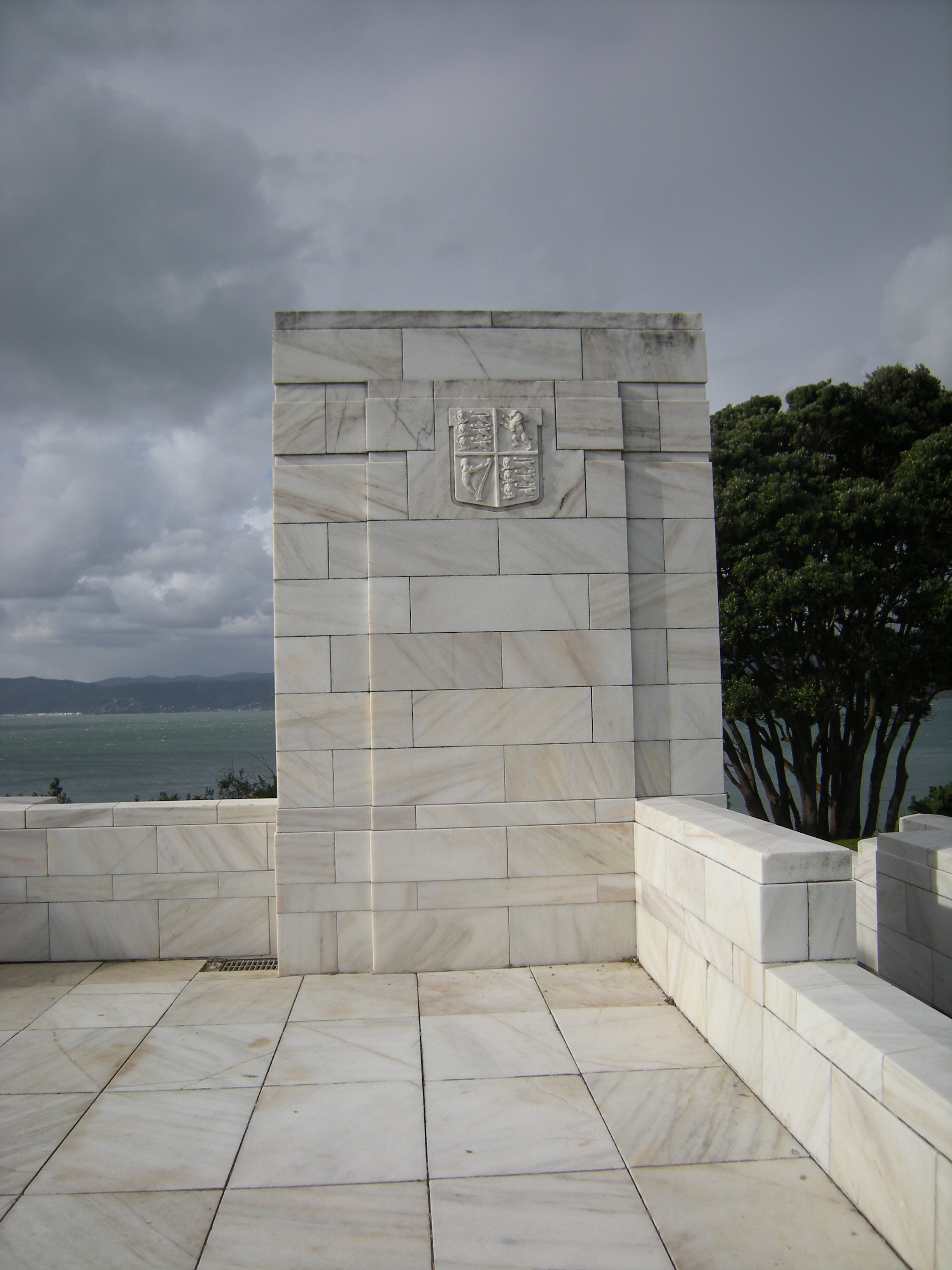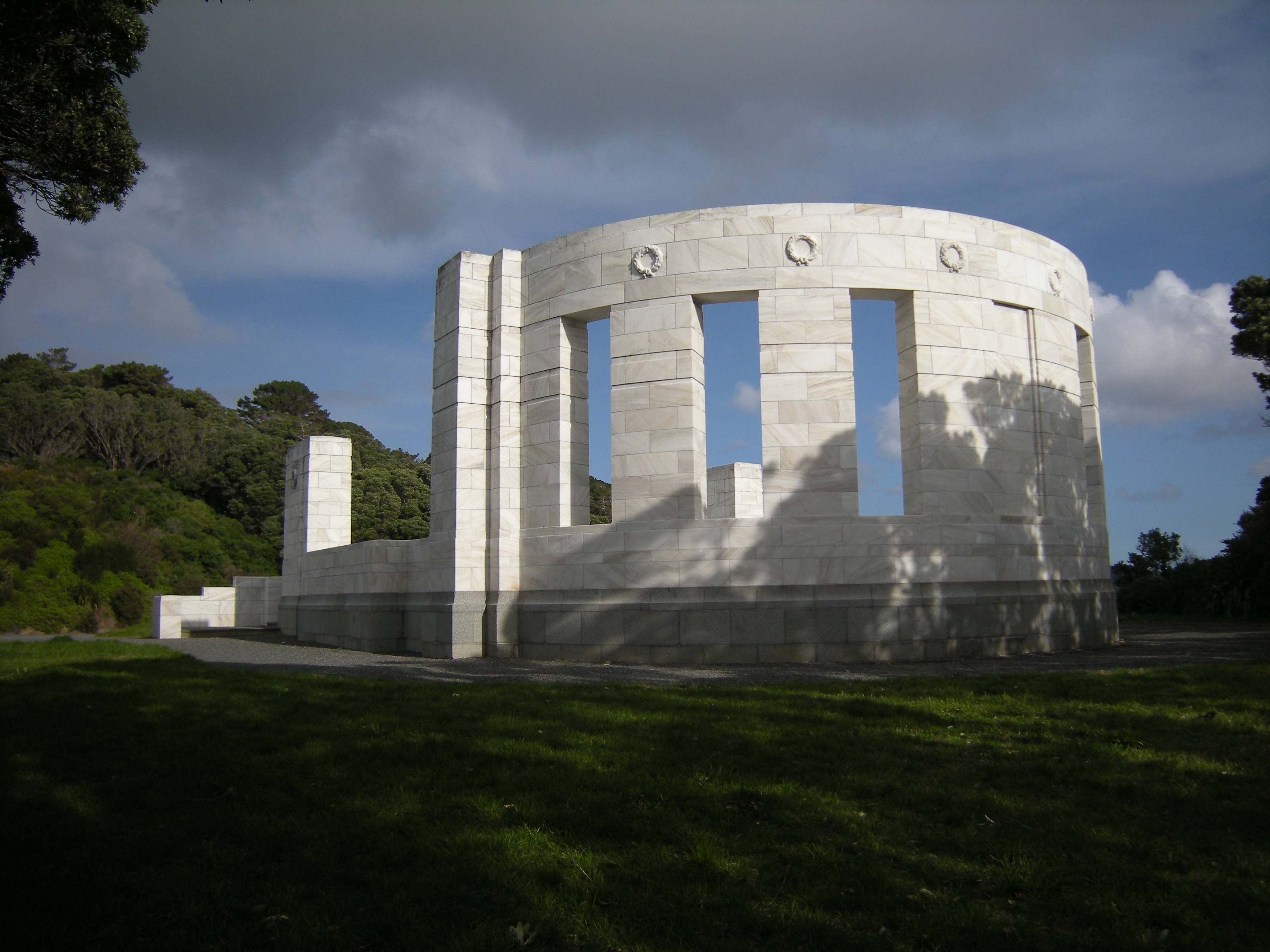Massey Memorial
Heritage object
-
Constructed
1930
-
-
Architect(s)
-
Builder(s)
Unknown
-
The Massey Memorial is an elaborate and highly visible monument. It is an excellent example of the work of Samuel Hurst Seager, featuring the Classical styling, careful siting, and austere simplicity that characterised his designs.
The Massey Memorial is associated with a number of important people. It is a physical memorial of Prime Minister William Massey and his wife. It is also associated with architects Samuel Hurst Seager and Gummer and Ford.
The site of the Massey Memorial is in an area known to have been occupied by Maori prior to European colonisation. Following this, the area became an important part of Wellington’s coastal defence systems. The Memorial reflects the fashion for erecting elaborate, permanent, and visible monuments to the honoured dead that was especially prevalent following the First World War.
-
Downloadable(s)
-
close
History
-
Sited on a promontory, this memorial commemorating W.F. Massey the Prime Minister of New Zealand from 1912 to 1925, is an impressive reminder of the only leader in the Commonwealth who was able to retain his position following World War One.
The site at Point Halswell has a long history of human occupation and was originally known as Rukutoa, and was occupied by a Maori Pa named Kai-tawharo or Kaitawaro. This land on the Miramar Peninsula was taken by the Crown in 1841 for ‘public purposes’, and renamed after Judge Edmond Halswell. From 1885 the site was used for military purposes as the Halswell Battery and barracks, one of a number of coastal defence forts built as a response to the Crimean War and the threat of a Russian invasion. The battery was constructed and maintained by prison labour. By 1913 the site had been leased by the Justice Department for use as a part of a women’s prison. The fort remained armed until the First World War when it was converted into a magazine.
William Massey, colloquially known as ‘Farmer Bill’, is New Zealand’s second longest serving Prime Minister. Although he was disliked by the left, he retained many of the liberal reforms that had been put in place prior to his election. During the war Massey and Joseph Ward formed a wartime coalition, the National Government. Ward caused a number of difficulties for Massey during this time, but the coalition held until the 1919 election, where Massey was the only Commonwealth leader to gain re-election following the war. Massey had represented New Zealand well throughout the war, placing the country firmly into the sphere of international politics, and in 1918 had travelled to Europe to represent New Zealand at the Paris Peace Conference and sign the Treaty of Versailles on New Zealand’s behalf.
The situation in post-war New Zealand worried Massey; the country was deeply divided and many were blaming the Government for the countries problems. Despite this, the 1919 election went to Massey and the Reform Party, and for the first and only time during his 31 years in parliament, he won a clear majority of the seats.
By 1920 a quarter century of prosperity in New Zealand was coming to an end and the country was slipping into a recession. In an attempt to address the falling prices that Britain paid for New Zealand produce Massey made moved towards stronger produce boards, starting with the New Zealand Meat-producers Board in 1922 and the Dairy-produce Control Board in 1923.
The 1922 election was a negative one, and was depressing for Massey. Reform was forced to create a coalition with independent parties, and while the parties were reluctant to work together, Massey remained Prime Minister.
Between 1923 and 1925 Massey took steps to combat inflation and keep interest rates down. He increased pensions, cut taxes, and continued spending on public works. Export prices began to improve and state loans were used to establish agricultural banks. Massey’s strategy was not only to create a favourable climate for the 1925 election, but also to persuade Liberal voters that the election would be between Reform and Labour, in the anticipation that most Liberal voters would shift to Reform. Massey would not, however, live to see the results of his strategy, which at the 1925 election helped to give Reform its greatest victory ever.
In August of 1923 Massey sailed to Britain returning in January 1924 ill and tired. It became known that he was suffering from cancer, which throughout 1924 forced him to relinquish many of his duties as Prime Minister. An operation on 30 March 1925 was unsuccessful, and on the 9th April he returned to his home on Tinakori Road, where he died on 10 May 1925 aged 69.
On his death the Massey Burial Ground Act was passed, which allocated 0.8 hectares of land for use as a burial ground for Massey and his widow. The land at Point Halswell was selected and the fort, which had been unused for eleven years, was converted for use as a crypt. The original gun pit was lined with marble to serve as a vault for Massey and his wife, and a temporary marble obelisk was erected over the gun pit roof to mark the grave above ground until a memorial could be completed.
The present memorial was designed by Samuel Hurst Seager in partnership with Auckland architects Gummer and Ford. It cost over £15,000, much of which was contributed by public donation. The memorial features seven columns arranged in a semi circle, topped by a curved marble block. A long, paved, marble walkway leads back to the entrance of the crypt where an inscription lists the names of Massey and his wife. A copper impression of Massey is located on the central column underneath the words ‘A Memorial of Loyal and Faithful service to King and Country’. At the end of the paved walkway, mirroring the circular shape of the columns is a dome decorated with raised vine leaves.
The memorial was to have been constructed of Italian marble, but following protests from nationalistic members of parliament, the architects settled on a base of Coromandel granite with the remaining sculpture composed of Kairuru marble from the Takaka quarry. The memorial was constructed by Hansford and Mills and traces the design of the original fort. The paved walkway marks the position of the underground magazine area that is now used as a passageway to reach the vault. The dome in the centre of the curved end marks the position of the 8 inch disappearing gun pit. The lower level of the fort, originally used for shell and cartridge storage, remains intact under the memorial. During the wars a tramway had been used to transfer ammunition to the magazine, and the original defence doors still remain. The gun pit was lined with brown marble. Horizontal lines of white marble on the walls echo the lines that relieve the starkness of the marble sarcophagus, which is placed in the centre of the chamber.
During the Second World War the site was commissioned for defence purposes and the remains of an observation post can be seen on the terraces behind the memorial.
The Massey Memorial is a prominent Wellington landmark and an excellent example of the work of Samuel Hurst Seager. The memorial demonstrates the careful siting and austere simplicity that characterised his work as New Zealand’s official war memorial architect. The conversion of a former battery into a crypt is unusual, but as Massey is a Prime Minister remembered for his staunch imperialism and governance throughout the First World War, it is a fitting memorial.
-
Modifications
close
-
1930
-
Original Construction
-
-
Occupation History
close
Not assessed
-
-
close
Architectural Information
-
Building Classification(s)
close
Not assessed
-
Architecture
close
The memorial was designed by Samuel Hurst Seager in partnership with Auckland architects Gummer and Ford. The memorial features seven columns arranged in a semi circle, topped by a curved marble block. A long, paved, marble walkway leads back to the entrance of the crypt where an inscription lists the names of Massey and his wife. A copper impression of Massey is located on the central column underneath the words ‘A Memorial of Loyal and Faithful service to King and Country’. At the end of the paved walkway, mirroring the circular shape of the columns is a dome decorated with raised vine leaves.
-
Materials
close
- Coromandel granite
- Kairuru marble
-
Setting
close
The Massey Memorial is situated at Point Halswell and is reached via a track that winds up from Shelly Bay Road. The Memorial is located at the northern end of Point Halswell. The memorial is a highly visible landmark with spectacular views of the harbour to the west and south. The remains of the World War Two observation post can be found in the area. The Memorial is an important part of a wider historical landscape and is associated with pre-European and European history, in particular defence.
-
Building Classification(s)
close
-
close
Cultural Value
The Massey Memorial is an elaborate and highly visible monument. It is an excellent example of the work of Samuel Hurst Seager, featuring the Classical styling, careful siting, and austere simplicity that characterised his designs.
The Massey Memorial is associated with a number of important people. It is a physical memorial of Prime Minister William Massey and his wife. It is also associated with architects Samuel Hurst Seager and Gummer and Ford.
The site of the Massey Memorial is in an area known to have been occupied by Maori prior to European colonisation. Following this, the area became an important part of Wellington’s coastal defence systems. The Memorial reflects the fashion for erecting elaborate, permanent, and visible monuments to the honoured dead that was especially prevalent following the First World War.
-
Aesthetic Value
close
-
Architectural
Does the item have architectural or artistic value for characteristics that may include its design, style, era, form, scale, materials, colour, texture, patina of age, quality of space, craftsmanship, smells, and sounds?
The Massey Memorial is an elaborate and highly visible monument. It is an excellent example of the work of Samuel Hurst Seager, featuring the Classical styling, careful siting, and austere simplicity that characterised his designs.
-
Townscape
Does the item have townscape value for the part it plays in defining a space or street; providing visual interest; its role as a landmark; or the contribution it makes to the character and sense of place of Wellington?
The Memorial is a highly visible landmark with spectacular views of the harbour. It contributes greatly to the sense of place and character of Point Halswell and Wellington.
-
-
Historic Value
close
-
Association
Is the item associated with an important historic event, theme, pattern, phase, or activity?
The site of the Massey Memorial is in an area known to have been occupied by Maori prior to European colonisation. Following this, the area became an important part of Wellington’s coastal defence systems. The Memorial reflects the fashion for erecting elaborate, permanent, and visible monuments to the honoured dead that was especially prevalent following the First World War.
-
Association
Is the item associated with an important person, group, or organisation?
The Massey Memorial is associated with a number of important people. It is a physical memorial of Prime Minister William Massey and his wife. It is also associated with architects Samuel Hurst Seager and Gummer and Ford.
-
-
Scientific Value
close
-
Archaeological
Does the item have archaeological value for its ability to provide scientific information about past human activity?
It is known that there was Maori occupation of the area, so it is likely that archaeological material is present. A number of sites have been identified in the area.
-
Educational
Does the item have educational value for what it can demonstrate about aspects of the past?
The Massey Memorial is a prominent landmark and is highly visited. It is associated with New Zealand’s Maori, defence, wartime, and governmental history, so the site is an interesting and valuable educational resource.
-
Technological
Does the item have technological value for its innovative or important construction methods or use of materials?
The Memorial is of technical value through the incorporation of a nineteenth century battery fort which was converted for the use as a crypt.
-
-
Social Value
close
-
Symbolic - Commemorative - Traditional - Spiritual
Does the item have symbolic, commemorative, traditional, spiritual or other cultural value for the community who has used and continues to use it?
The Massey Memorial has high symbolic and commemorative value as it is a memorial built to honour one of New Zealand’s longest serving Prime Ministers
-
Public Esteem
Is the item held in high public esteem?
As a memorial to a former Prime Minister, the Massey Memorial is held in high public esteem by the people of New Zealand. Much of it was paid for by public donation and continues to be a place of historic significance
-
Sentiment - Connection
Is the item a focus of community sentiment and connection?
This memorial is an important physical reminder of the Prime Minister William Massey and a testimony to the public and governmental respect that he gained throughout his career. It is a focus of community connection due to its strong links to New Zealand’s governmental, wartime, and defence history.
-
-
Level of Cultural Heritage Significance
close
-
Rare
Is the item rare, unique, unusual, seminal, influential, or outstanding?
The Massey Memorial is New Zealand’s only example of a military battery being converted for use as a crypt.
-
Representative
Is the item a good example of the class it represents?
This memorial is an excellent example of the designs of Samuel Hurst Seager and of the kinds of memorials that were popular following World War One.
-
Authentic
Does the item have authenticity or integrity because it retains significant fabric from the time of its construction or from later periods when important additions or modifications were carried out?
This memorial has had no listed alterations made to it, so retains authenticity of materials, as well as authenticity of design, craftsmanship, and setting.
-
Importance
Is the item important at a local, regional, national, or international level?
The Massey Memorial is a nationally significant monument to one of our longest serving Prime Ministers. It has architectural values as an example of the work of Samuel Hurst Seager and Gummer and Ford, is of significant historic value through its numerous associations, is of archaeological, educational, and technical value, is held in high public esteem, has high symbolic and commemorative values, is a focus of sentiment and connection, and has a high level of authenticity.
-
-
Local / Regional / National / International Importance
close
Not assessed
-
Aesthetic Value
close
-
close
Site Detail
-
District Plan Number
13/47
-
Legal Description
Pt Military Reserve Watts Peninsula District
-
Heritage New Zealand Listed
1/Historic place 222
-
Archaeological Site
Pre 1900 activity associated with site
-
Current Uses
unknown
-
Former Uses
unknown
-
Has building been funded
No
-
Funding Amount
Not applicable
-
Earthquake Prone Status
Unknown
-
-
close
Additional Information
-
Sources
close
- Historic Places Trust. ‘Samuel Hurst Seager.’ Professional Biographies, accessed 21 November 2013
- Historic Places Trust. ‘Gummer and Ford – Architectural Partnership.’ Professional Biographies, accessed 21 November 2013
- O’Brien, Rebecca. ‘Massey Memorial.’ Historic Places Trust: unpublished registration report. 5 October 2002, accessed 21 November 2013
- Technical Documentation close
-
Footnotes
close
Not available
-
Sources
close
Last updated: 9/28/2017 3:58:43 AM

